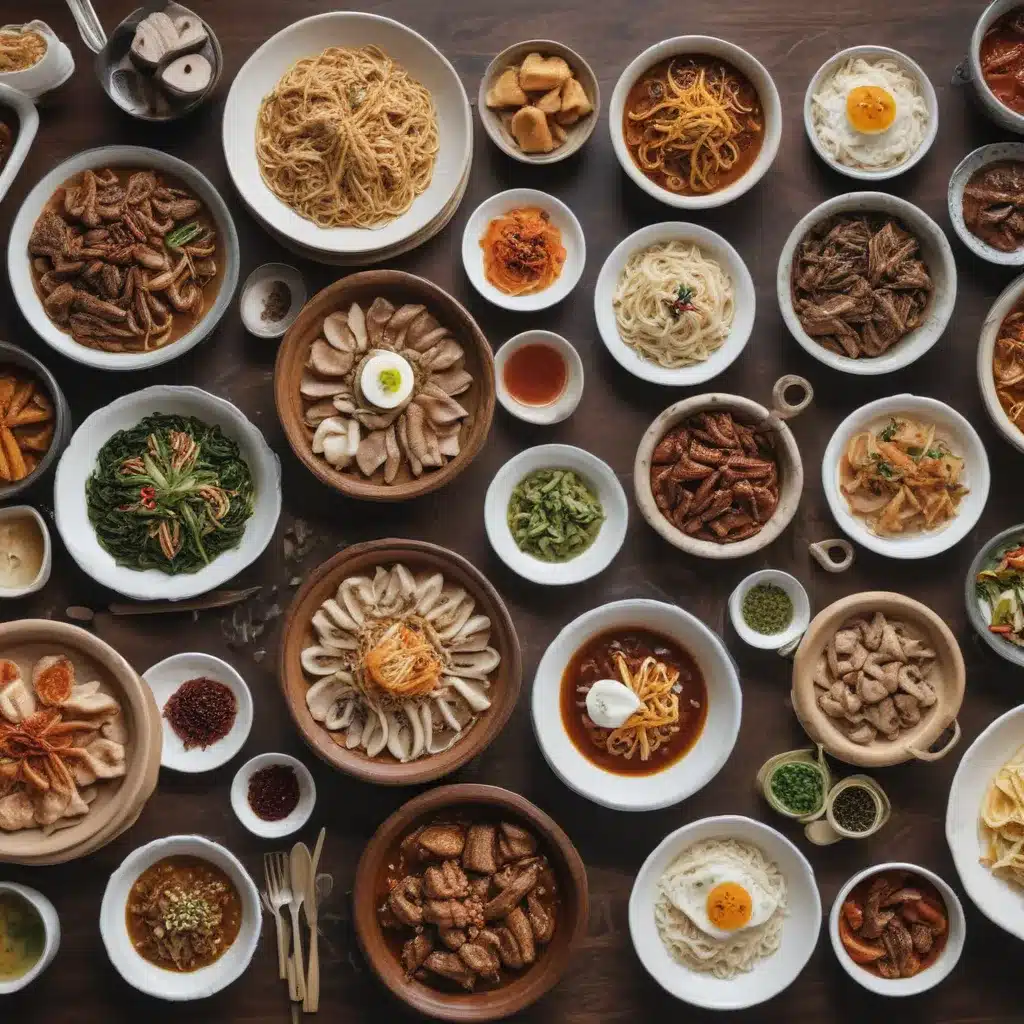
Nephew’s Culinary Adventures
I’m a self-professed Asianophile, or perhaps Asiaphile – I can never quite decide which term is more fitting. But what I do know is that I’ve developed a deep fascination for the cultures and cuisines of East Asia, thanks in large part to my experiences living in places like Taipei, Taiwan and Seoul, South Korea. During those eye-opening stints abroad, I was introduced to a whole new world of flavors that have kept me coming back for more.
So when I moved to Boston a few years ago, I was thrilled to discover that the city’s culinary landscape was rapidly evolving, with Korean restaurants popping up all over the place. It was like an adventure waiting to happen, wading into a cuisine that was both unique and partially familiar, with some ingredients overlapping with other Asian culinary traditions.
One of the first stops on my Korean food exploration was a visit to HMart, a massive Korean grocery store that had recently opened in nearby Burlington. As I wandered the aisles, I was struck by the sheer breadth of products – from the countless varieties of kimchi to the dizzying array of noodles, rices, and spices. The lack of consistent English labeling only added to the sense of mystery, making my culinary adventures both puzzling and endlessly intriguing.
Conquering the Kimchi Challenge
Of course, no exploration of Korean cuisine would be complete without diving headfirst into the world of kimchi – that ubiquitous, fermented cabbage dish that is the undisputed star of the show. I’ll admit, at first I wasn’t entirely sure what to make of the pickle-y, garlicky, spicy, and sour flavors. But the more I tried it, the more I came to appreciate the complex, yet simple nature of this humble dish.
Determined to take my kimchi appreciation to the next level, I decided to try my hand at making a batch myself. I enlisted the help of my trusty nephew, who had honed his kimchi-making skills during his time in Seoul, and we set out on a kimchi-making journey. Armed with tips from the expert Maangchi and her helpful blog and videos, we set to work chopping, seasoning, and meticulously mixing the ingredients.
The process was surprisingly straightforward, once we got the hang of it. Salting and wilting the cabbage, julienning the vegetables, and creating the flavorful porridge – it all came together in a surprisingly satisfying way. And as we kneaded the mixture with our gloved hands, I couldn’t help but feel a sense of connection to the centuries-old tradition of communal kimchi-making in Korea.
Exploring the Culinary Wonders of Boston’s Korean Scene
With our homemade kimchi in tow, we set out to explore the burgeoning Korean food scene in Boston. One of my new favorite dishes quickly became bibimbap – a bowl of rice topped with an array of seasoned vegetables, meat, and a perfectly cooked fried egg. The way the components meld together when you stir it all up is just pure comfort in a bowl.
As I continued to discover new Korean restaurants, I was constantly amazed by the depth and diversity of the cuisine. From the fiery, complex flavors of Korean Garden‘s signature dishes to the delicate, nuanced preparations at establishments like Moo, there was always something new to explore.
And the best part? Korean food in Boston isn’t just limited to traditional fare. The city’s thriving food scene has given rise to innovative fusion concepts that blend Korean flavors with other global influences. Places like Seoul Patch and Kimchipapi Kitchen are redefining what it means to be a Korean restaurant, pushing the boundaries of the cuisine in exciting and delicious ways.
Uncovering the Rich History and Culture
As I dove deeper into the world of Korean cuisine, I couldn’t help but be fascinated by the rich history and cultural traditions that underpin it. From the ancient farming practices that shaped the use of fermented condiments like gochujang, to the communal rituals of kimchi-making, there’s a deep well of knowledge to be explored.
Maangchi’s blog and videos have been an invaluable resource in helping me understand the cultural significance of these dishes. And learning about the way Korean families would come together to produce enough kimchi to last the entire year has given me a newfound appreciation for the role food plays in shaping community and tradition.
But the best way to truly unlock the mysteries of Korean cuisine, in my opinion, is to dive in with an open mind and a curious palate. Whether you’re exploring the bustling aisles of HMart, trying your hand at homemade kimchi, or indulging in the latest Korean fusion creations, there’s always something new to discover in the vibrant and ever-evolving world of Korean food in Boston.
Embracing the Culinary Adventure
As an Asianophile (or Asiaphile, take your pick), I’ve come to relish the sense of adventure that comes with exploring the depths of Korean cuisine. From the initial puzzlement over unfamiliar ingredients to the moment of triumph when you nail a new dish, it’s a journey that’s constantly full of surprises and delights.
And that’s what I love most about the Korean food scene in Boston – the city’s culinary landscape is a veritable playground for the curious and adventurous eater. Whether you’re a seasoned Korean food enthusiast or a complete newcomer to the cuisine, there’s always something new to discover, from the time-honored classics to the cutting-edge fusion creations.
So, if you’re ready to unlock the mysteries of Korean cuisine in Boston, I encourage you to dive in headfirst. Wander the aisles of HMart, experiment with homemade kimchi, and let your taste buds be your guide as you explore the vibrant, ever-evolving world of Korean food in this dynamic city. The culinary adventure of a lifetime awaits.
